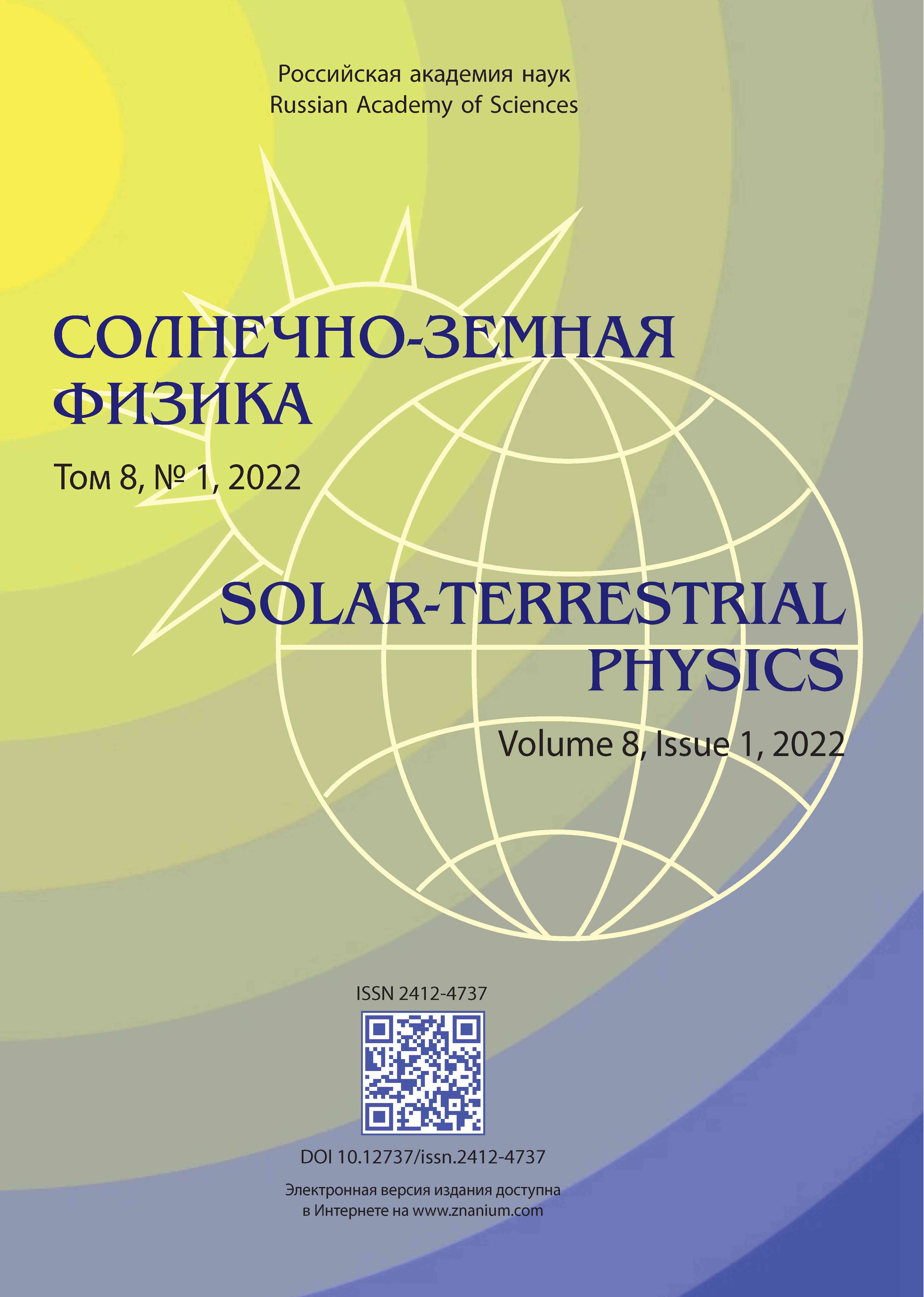Irkutsk, Russian Federation
Irkutsk, Russian Federation
Using photospheric data and data on the longitudinal magnetic field from the SDO satellite, as well as observations in the Hα line from GONG ground stations, we have studied the flare activity of the NOAA 12673 sunspot group, which in September 2017 produced the largest X9.3 class flare in the last decade. The active region was distinguished by rapid development, complex topology, and magnetic field dynamics. We have established that in the active region almost throughout the development period due to movements of diverse polar magnetic fluxes and their convergence, numerous local polarity inversion lines (LPIL) of the magnetic field were formed. Small solar flares have been found to be closely related to LPIL and to occur in those areas of LPIL where the gradient of the longitudinal magnetic field over time reaches maximum values.
active regions, small solar flares, longitudinal magnetic field structure, polarity inversion lines (PIL)
1. Altyntsev A.T., Banin V.G., Kuklin G.V., Tomozov V.M. Solnechnye vspyshki [Solar Flares] Moscow, Nauka Publ., 1982, 246 p.
2. Benz A. O. Flare observations. Solar Phys. 2017, vol. 14, no. 2, pp. 1-59. DOI:https://doi.org/10.1007/s41116-016-0004-3.
3. Borovik A.V., Zhdanov A.A. Statistical studies of low-power flares. Distribution of flares by area, brightness, and classes. Solar-Terr. Phys. 2017, vol. 3, no. 1, pp. 40-56. DOI:https://doi.org/10.12737/article_58f96fda7e3e76.83058648.
4. Borovik A.V., Zhdanov A.A. The processes of energy release in low-power solar flares. Solar-Terr. Phys. 2019, vol. 5, no. 4, pp. 3-9. DOI:https://doi.org/10.12737/stp-54201901.
5. Borovik A.V., Zhdanov A.A. Low-power solar flares of optical and X-ray wavelengths for solar cycles 21-24. Solar-Terr. Phys. 2020, vol. 6, iss. 3, pp. 16-22. DOI:https://doi.org/10.12737/stp-63202002.
6. Cui Y., Li R., Zhang L., He Y., Wang H. Correlation between solar flare productivity and photospheric magnetic field properties. Solar Phys. 2006, vol. 237, no. 1, pp. 45-59. DOI:https://doi.org/10.1007/s11207-006-0077-6.
7. Fletcher L., Dennis B.R., Hudson H.S., Krucker S., Phillips K., Veronig A., Veronig A., Battaglia M., Bone L., Caspi A., Chen Q., Gallagher P., Grigis P.T., Ji H., Liu W., Milligan R.O., Temmer M. An observational overview of solar flares. Space Sci. Rev. 2011, vol. 159, pp. 19-106. DOI:https://doi.org/10.1007/s11214-010-9701-8.
8. Hagyard M.J., Moore R.L., Emslie A.G. The role of magnetic field shear in solar flares. Adv. Space Res. 1984a, vol. 4, no. 7, pp. 71-80. DOI: 1016/0273-1177(84)90162-5.
9. Hagyard M.J., Smith J.B., Teuber D., West E.A. A quantitative study relating observed shear in photospheric magnetic fields to repeated flaring. Solar Phys. 1984b, vol. 91, no. 1, pp. 115-126. DOI:https://doi.org/10.1007/BF00213618.
10. Heyvaerts J., Priest E.R., Rust D.M. An emerging flux model for the solar flare phenomenon. Solar Phys. 1977, vol. 53, no. 1, pp. 255-258. DOI:https://doi.org/10.1086/155453.
11. Masuda S., Kosugi T. Hara H., Tsuneta S., Ogawara Y. A loop-top hard X-ray source in a compact solar flare as evidence for magnetic reconnection. Nature, 1994, vol. 371, pp. 495-497. DOI:https://doi.org/10.1038/371495a0.
12. Priest E.R. Solar flare MHD processes. Publ. Astron. Inst. Acad. Sci. Czech. Republic, 1992, vol. 88, pp. 95-120.
13. Raman K.S., Gupta S.S., Selvendran R. Filament activity in a quiet region flare. Astron. Astrophys. 1993, vol. 14, no. 1, pp. 45-52. DOI:https://doi.org/10.1007/BF02702280.
14. Romano P., Elmhamdi A., Kordi A.S. Two strongwhite-light solar flares in AR NOAA 12673 as potential clues for stellar superflares. Solar Phys. 2019, vol. 294, no. 4, 15 p. DOI:https://doi.org/10.1007/s11207-018-1388-0.
15. Rust D.M., Gauzzi G. Variation of the vector magnetic field in an eruptive flare. Word Space Congr.: 43rd Congr. Int. Astronaut. Fed. (LAF) and 29th Plen. Meet. Comm. Space Res. (COSPAR). Washington, 1992, 486 p. DOI:https://doi.org/10.1007/3-540-55246-4_73.
16. Smith H., Smith E. Solnechnye vspyshki [Solar Flares] Moscow, Mir Publ., 1966, 426 p. (In Russian). (English edition: Smith H.J., Smith E. Solar Flares. Macmillan, 1963. 322 p.).
17. Somov B.V. Physical Processes in Solar Flares. Dordrecht, Boston, Kluwer Academic Publ., 1992, 249 p.
18. Temmer M., Veronig A., Hanslmeier A., Otruba W. Statistical analysis of solar Hα flares. Astron. Astrophys. 2001, vol. 375, pp. 1049-1061. DOIhttps://doi.org/10.1051/0004-6361:20010908.
19. Verma M. The origin of two X-class flares in active region NOAA 12673. Shear flows and head-on collision of new and preexisting flux. Astron. Astrophys. 2018, vol. 612, A101, 7 p. DOI:https://doi.org/10.1051/0004-6361/201732214.
20. Yang Shuhong, Zhang Jun, Zhu Xiaoshuai, Song Qiao. Block-induced complex structures building the flare-productive solar active region 12673. Astrophys. J. Lett. 2017, vol. 849, L21, 7 p. DOI:https://doi.org/10.3847/2041-8213/aa9476.
21. URL: http://jsoc.stanford.edu (accessed October 10, 2021).
22. URL: https://gong.nso.edu (accessed October 10, 2021).



















